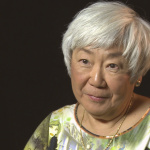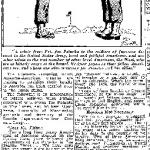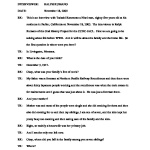Fighting for Tomorrow: Japanese Americans in America's Wars (exhibition)
Exhibition on Japanese Americans in the American armed forces that debuted at the Japanese American National Museum (JANM) in 1995.
For the follow up to the popular and well-reviewed America's Concentration Camps , JANM decided to focus on the related story of Japanese Americans who served in the military. Though the focus would be service during World War II, Fighting for Tomorrow would also include the stories of Japanese Americans serving from the Spanish American War forward. Like its predecessor, it would be displayed in the main gallery of JANM's historic building, designed by Ralph Appelbaum Associates, and include a video component directed by Robert Nakamura . Kaoru Oguri was the curator of the exhibition.
The core theme of the exhibition was the idea of "Fighting Two Wars," the title of the first section of the exhibition: that Japanese American soldiers fought the enemy on the battlefield and discrimination back home. After juxtaposing a history of anti-Japanese legislation with Issei and Nisei military service before World War II, the exhibition introduced the story of wartime exclusion and incarceration before delving into the heroic story of Nisei soldiers in World War II through two large cases of objects, slides of war scenes displayed on large overhead panels, and electronic signs. Nakamura's documentary Looking Like the Enemy , featuring interviews with Japanese American veterans of World War II, Korea and Vietnam, also played in the gallery. There was also an alcove where Japanese American veterans could contribute their information to JANM's databases or add additional information or corrections to what was already there. As part of its coverage of present day issues, the exhibition was to include a section on Bruce Yamashita, a Japanese American who successfully fought his race-based expulsion from the U.S. Marine Corps Officer Candidate School in the 1990s. However, objections from some mainland veterans led to this section being dropped from the final exhibition, to the dismay of some Japanese Americans from Hawai'i, where Yamashita was from and where he had enjoyed wide support. [1]
Analysis of Fighting for Tomorrow by Takashi Fujitani and LeiLani Nishimura reached similar conclusions. Both noted that the exhibition reinforced a core narrative of U.S. nationalism through a simplified depiction of Nisei service in World War II that largely omitted women. Both also pointed out how the video component, Looking Like the Enemy , presented a more complex picture that worked at cross-purposes with the exhibition in some ways. Fujitani highlighted the "unidimensional narrative of valor and sacrifice" that left out the loyalty questionnaire , renunciation of citizenship, draft resistance , and resistance within the military . [2] Nishime points out the similarities between Fighting for Tomorrow and the Smithsonian Institution's A More Perfect Union: Japanese Americans & the U.S. Constitution , "from the first room dedicated to the camp experience to the almost fetishistic display of military paraphernalia." She adds that Fighting for Tomorrow "only rarely strays from the dominant narrative." [3]
Fighting for Tomorrow closed on January 12, 1997. An electronic version of the exhibition was produced for the Hirasaki National Resource Center in JANM's new pavilion that opened in 2000.
For More Information
Fighting for Tomorrow: Japanese Americans in America's Wars on Japanese American National Museum website.
Fujitani, Takashi. "National Narratives and Minority Politics: The Japanese American National Museum's War Stories." Museum Anthropology 21.1 (1997): 99-112.
Nishime, LeiLani. "Communities on Display: Museums and the Creation of the (Asian) American Citizen." Amerasia Journal 30.3 (2004–05): 40–60.
Santoki, Mark. "The AJA Soldiers Story?" Hawaii Herald , September 15, 1995, A1, A13–14.
Footnotes
- ↑ Mark Santoki, "The AJA Soldiers Story?" Hawaii Herald , September 15, 1995, A1, A13–14.
- ↑ Takashi Fujitani, "National Narratives and Minority Politics: The Japanese American National Museum's War Stories," Museum Anthropology 21.1 (1997): 04.
- ↑ LeiLani Nishime, "Communities on Display: Museums and the Creation of the (Asian) American Citizen," Amerasia Journal 30.3 (2004–05): 50–51.
Last updated Jan. 9, 2024, 3:42 a.m..





![Letter from Cedrick M. Shimo to the Office of Redress Admnistration [Administration], December 4, 1990 Letter from Cedrick M. Shimo to the Office of Redress Admnistration [Administration], December 4, 1990](https://encyclopedia.densho.org/front/media/cache/a7/88/a788214a718fe6377c98198ef0311566.jpg)


